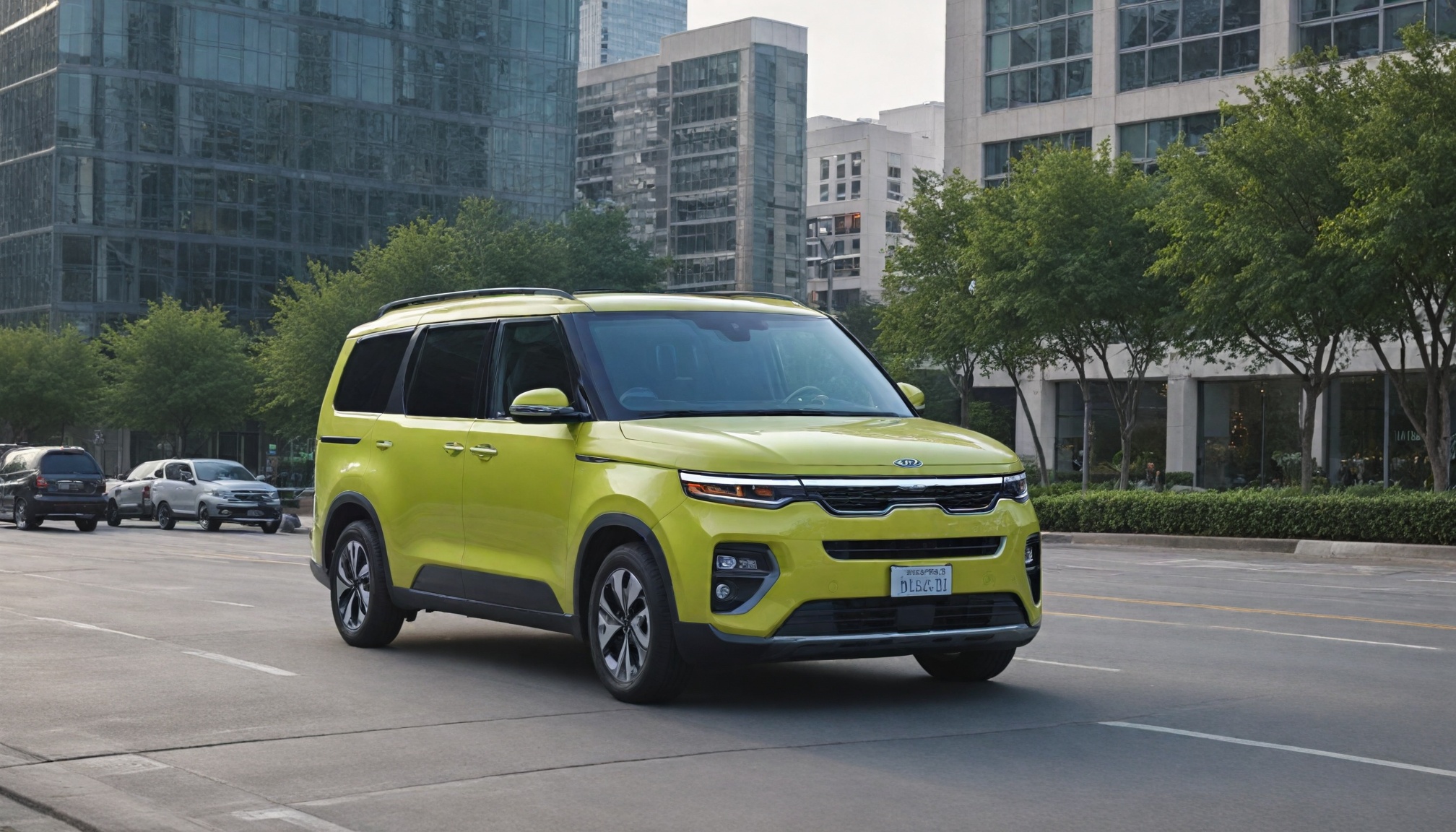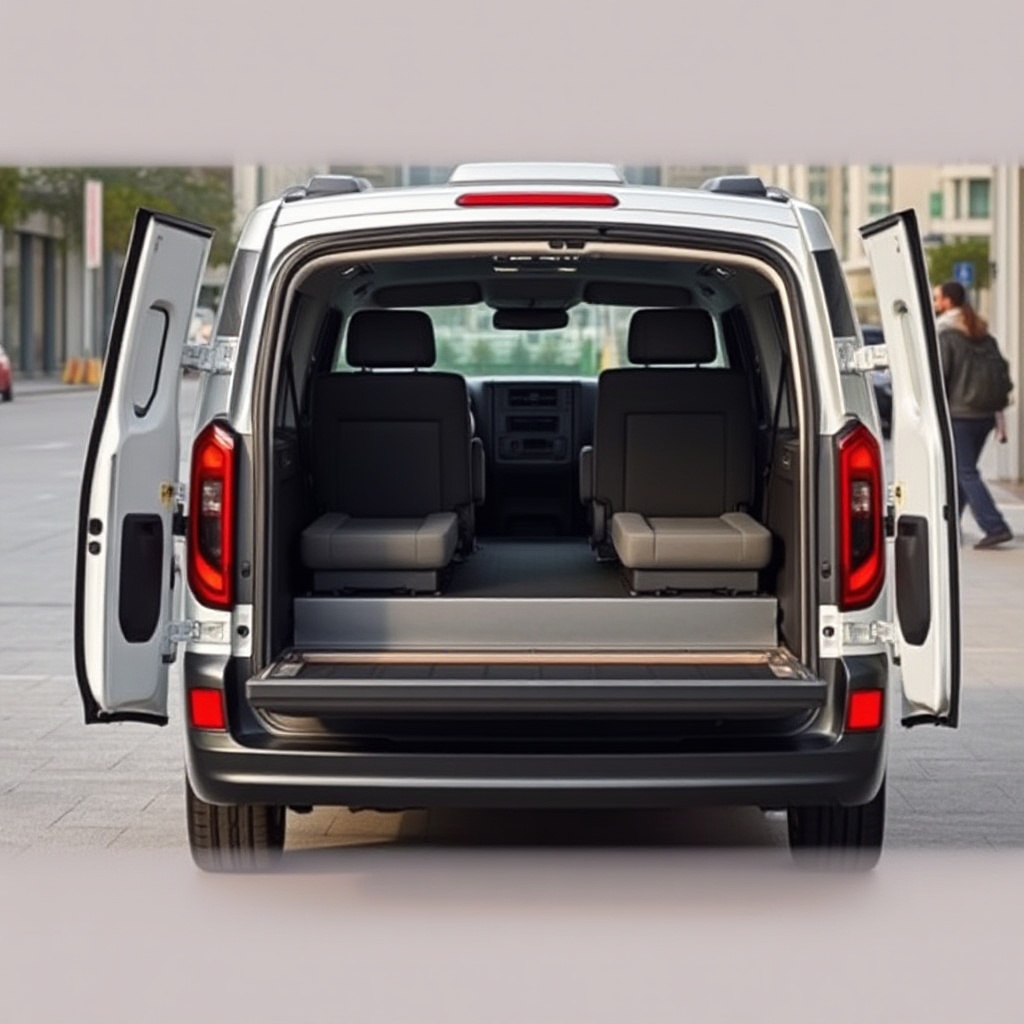
Kia's PV5 electric van revolutionizes transportation with its modular "Platform Beyond Vehicle" design, adapting from passenger to cargo configurations while offering competitive range at just £32,995.

Drivetech Partners
Kia's revolutionary PV5 van introduces a fundamental shift in electric vehicle design, moving beyond fixed-purpose transportation to a flexible platform that adapts to diverse commercial and personal needs. With its innovative "Platform Beyond Vehicle" architecture, the PV5 can transform between passenger van, cargo carrier, luxury shuttle, and more—all while starting at a competitive £32,995 price point that challenges established competitors like the Volkswagen ID.Buzz.
Key Takeaways
The PV5's modular platform architecture enables quick conversion between multiple configurations, from passenger to cargo variants and specialized builds
Starting at £32,995 ($44,000), the PV5 undercuts many competitors while offering comparable or superior technology and features
Battery options provide up to 249 miles of range with fast charging capability that replenishes 10-80% in under 30 minutes
Advanced digital cockpit and software integration support over-the-air updates and comprehensive fleet management tools
The PV5 represents the future of transportation where vehicles adapt to changing needs rather than being limited to single-purpose designs

"Platform Beyond Vehicle": Revolutionizing Vehicle Design and Utility
The Kia PV5 is the first production vehicle built on the company's groundbreaking Platform Beyond Vehicle (PBV) architecture. This isn't just another electric van - it's a completely reimagined approach to vehicle design that prioritizes adaptability and purpose-driven configurations.
What makes the PBV concept revolutionary is its ability to transform between multiple configurations with minimal downtime. The platform supports conversion between passenger van, cargo carrier, chassis cab, luxury shuttle, and wheelchair-accessible versions. This flexibility extends beyond traditional upfitting, as entire body and interior modules can be swapped quickly at the factory or aftermarket level.
The E-GMP.S flat-floor design maximizes interior space while keeping the vehicle's footprint manageable for urban environments. The modular body panels not only streamline manufacturing but also reduce the total cost of ownership through simplified repairs and customization options.
This approach signals a departure from traditional vehicle design, where vehicles serve a fixed purpose throughout their lifecycle. Instead, the PV5 can evolve with changing needs, extending utility and potentially reducing the number of vehicles required for diverse operations.
Technical Specifications and Performance Metrics
The PV5 offers two main battery options to suit different operational needs. The standard 51.5 kWh battery delivers 179 miles of WLTP range, while the long-range 71.2 kWh option extends this to an impressive 249 miles on a single charge. These ranges position the PV5 competitively in the electric van segment, offering sufficient range for daily urban operations and regional deliveries alike.
Charging capabilities are equally impressive, with the 400V fast charging system achieving 10-80% capacity in under 30 minutes when connected to a 150kW charger. This minimizes downtime for commercial operators and adds convenience for personal users.
The PV5 includes vehicle-to-load (V2L) capability, allowing users to power external devices directly from the van's battery. This feature turns the van into a mobile power station, supporting everything from worksite tools to camping equipment.
With dimensions of 4,695mm length, 1,895mm width, and 1,899mm height, the PV5 provides greater urban maneuverability than competitors like the ID.Buzz while maintaining generous cargo capacity: 1,320 liters behind the seats, expanding to 2,315 liters with rear seats folded.
Digital Integration and Advanced Features
The PV5's modern cockpit centers around a 12.9-inch touchscreen running Android Automotive OS, paired with a 7.5-inch driver display. Wireless Apple CarPlay and Android Auto come standard, ensuring seamless connectivity for all users. This digital integration goes beyond infotainment, extending to comprehensive vehicle controls and operational features.
Safety technology is another area where the PV5 excels, offering Highway Driving Assist, Lane Keep Assist, Forward Collision-Avoidance, Smart Cruise Control, and parking sensors. These features not only enhance safety but also reduce driver fatigue during extended operations.
Over-the-air (OTA) updates keep the vehicle's software current without requiring dealer visits – crucial for fleet operators who need to minimize downtime. This software-first approach allows the PV5 to gain new features and improve existing ones throughout its lifecycle.
User-friendly design elements include a low 399mm side step, flat floors, modular and foldable seats, and electric sliding doors. The PV5 launches with a 5-seat configuration, with a 7-seat version planned to follow, further enhancing its versatility for passenger transport.
Commercial Applications and Fleet Integration
For commercial operators, the PV5 offers dedicated fleet management tools through a partnership with Geotab. This integration provides real-time tracking, diagnostics, and performance analytics that help optimize operations and reduce costs.
The modularity of the PV5 significantly reduces downtime and total cost of ownership by allowing quick adaptation to changing operational needs. Need more cargo space for a specific job? The interior configuration can be adjusted. Need to transport people instead of packages? The vehicle can be reconfigured accordingly.
Kia's purpose-built manufacturing plant in Hwaseong optimizes the flexible production process, ensuring consistent quality across all PV5 variants. The software-first approach enables deployment of new mobility, routing, and operational features through cloud integration without requiring hardware changes.
For fleet managers, the PV5 offers tangible benefits through:
Simplified repairs with interchangeable parts
Adaptation to evolving business requirements
Reduced vehicle downtime through modular design
Extended utility across multiple use cases
Lower total ownership costs compared to maintaining multiple specialized vehicles
Personal Mobility Transformation
The PV5's flexibility extends beyond commercial applications into personal mobility. It allows one vehicle to serve multiple household purposes: family transporter during the week, delivery vehicle for a side business on weekends, and adventure vehicle for vacations.
Available in two trim levels – Essential and Plus – the PV5 caters to different customer needs and budgets. The Plus trim adds luxury features like powered tailgate access, premium interior materials, and additional convenience features while maintaining the fundamental adaptability of the platform.
Passenger versions offer both utility and comfort through reconfigurable interiors and premium features. The lower entry point than competitors makes electric van ownership more accessible to families and small businesses who previously found EV adoption cost-prohibitive.
The PV5 combines the practicality of a van with the technology and efficiency of modern electric vehicles, creating a compelling option for those looking to transition to electric transportation without sacrificing utility or comfort.
Market Positioning and Competitive Analysis
The PV5 stands as a direct competitor to the Volkswagen ID.Buzz but with significant advantages: more flexible body styles, more modern digital features, and a lower entry price at £32,995 compared to the ID.Buzz's higher price point. This positions the PV5 as an accessible entry point into electric van ownership for both commercial and private buyers.
Fast charging capabilities and competitive range compare favorably to existing electric van options on the market. The PV5 offers practical utility without the range anxiety that has plagued earlier electric commercial vehicles.
The PV5 is just the beginning of Kia's PBV strategy, with larger PV7 (planned for 2027) and PV9 (2029) models already announced. This long-term commitment demonstrates Kia's confidence in the platform and suggests ongoing development and refinement.
By targeting both commercial fleets and private mobility markets simultaneously, Kia has positioned the PV5 to disrupt multiple vehicle segments at once. This dual-market approach gives the platform greater economies of scale and development resources than vehicles targeting narrower use cases.
The Future of Modular Transportation
The PV5 signals a broader industry shift from fixed-purpose vehicles to adaptable platforms defined by software and modular hardware. This approach allows vehicles to evolve with user needs rather than becoming obsolete when requirements change.
Electric vans are moving from niche logistics solutions to mainstream multi-use mobility platforms, and the PV5 is at the forefront of this transition. Its adaptable architecture sets new expectations for vehicle customization, adaptation, and lifecycle management.
Kia's approach provides a template for how future vehicles will be designed, manufactured, and utilized across the industry. We're witnessing the early stages of a transformation where vehicles become more like platforms for mobility services rather than fixed products.
The PV5 represents a fundamental rethinking of what vehicles can be in an electric, software-defined era. By embracing modularity and adaptation, Kia has created not just a new van, but potentially a new paradigm for transportation.
Sources:
kia.com/eu - PV5 Cargo
worldwide.kia.com - PV5
electrek.co - Kia PV5 electric van pre-orders start under $45,000
theevreport.com - Kia PV5 passenger van UK pricing and specs
electrifying.com - Kia PV5 review
